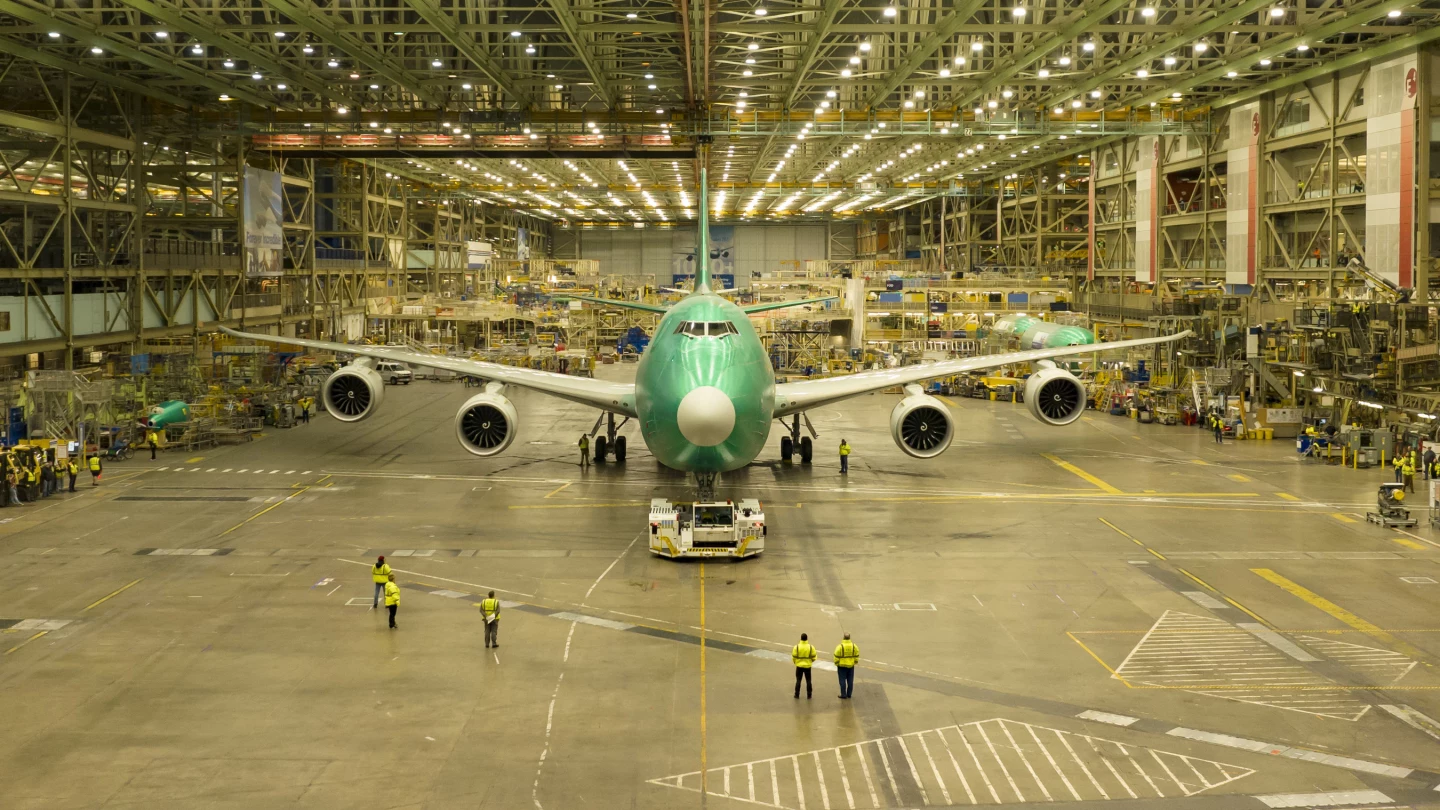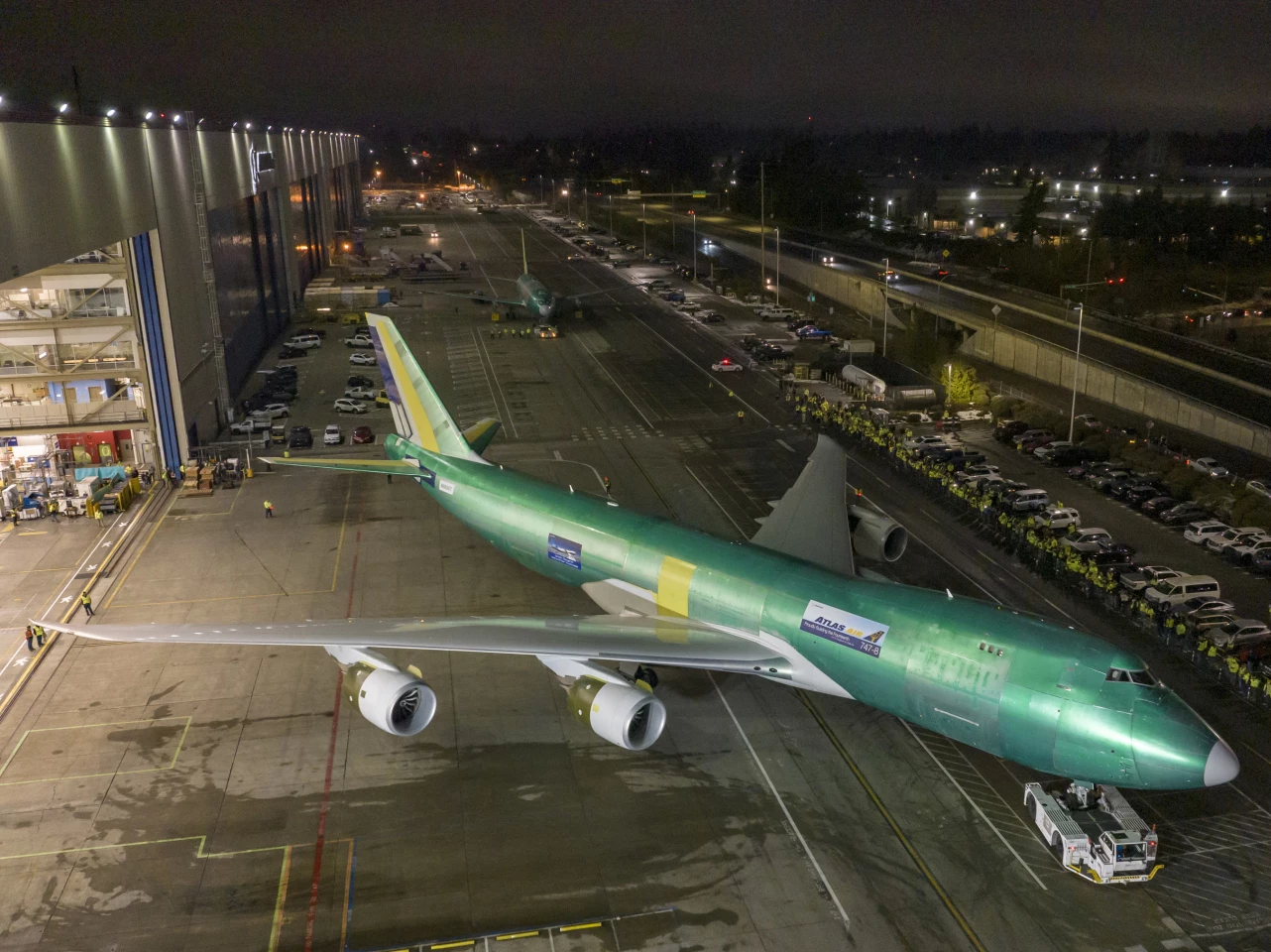An era of aviation history has come to an end after 54 years. On Tuesday, the last 747 Jumbo Jet rolled off the production line at Boeing's Everett, Washington, facility. Built for Atlas Air, the 747-8 freighter is the last of 1,574 of the aircraft that earned the nickname "Queen of the Skies."
Still in its iridescent green protective coating, the giant aircraft was towed out of the widebody aircraft factory in a low-key exercise without any fanfare. Once the 747 has been cleared, it will be flown to another Boeing facility where it will be painted in the Atlas Air livery in anticipation of final delivery to the customer next year.
The 747 was born out of a failed bid by Boeing to market a large jet transporter to the US military in the 1960s. That contract for what became the C-5A Galaxy eventually went to Lockheed, but Boeing was convinced that its basic design, with its high-bypass turbofan engine, could be reworked for the civilian market, which was booming at the time.

On January 9, 1969, the first 747 prototype took to the skies over Washington state. It was a staggering 225 feet (68.5 m) long, had a wing area larger than a basketball court, and the tail was as high as a six-story building.
It also had a bulge atop the pressurized hull, which gave it a distinctive, whale-like profile that was hard to miss. The reason for this was that the Boeing designers were hedging their investment bets. The late 1960s were a time when supersonic passenger aircraft were being tested and Boeing wasn't sure whether the 747 would soon be made obsolete as a passenger liner, so the aircraft was designed with a high cockpit and a nose that could accommodate a flip-up door for loading cargo.
The supersonic challenge never happened and the 747 was a prime mover in helping to democratize air travel by carrying over 300 passengers in the first wide-body, two-aisle configuration, with later configurations accommodating as many as 524 passengers. The first versions even had a piano lounge on the upper deck.

According to Boeing, the 747-8 freighter has a payload of 133.1 tonnes, which is the equivalent to 10,699 solid-gold bars or 19 million ping-pong balls. During its long history, it appeared in many different roles, including stretched variants, long-range variants, and special freight variants. However, the Jumbo Jet also saw service as a Space Shuttle ferry to fly the spacecraft between California and the Kennedy Space Center, as the US President's flying White House called Air Force One, a concept for a flying aircraft carrier, a restaurant, a British movie set, and a hostel. In addition, it featured in over 300 films.
"For more than half a century, tens of thousands of dedicated Boeing employees have designed and built this magnificent airplane that has truly changed the world," said Kim Smith, Boeing Vice President and general manager, 747 and 767 Programs. "We are proud that this plane will continue to fly across the globe for years to come."
Source: Boeing







